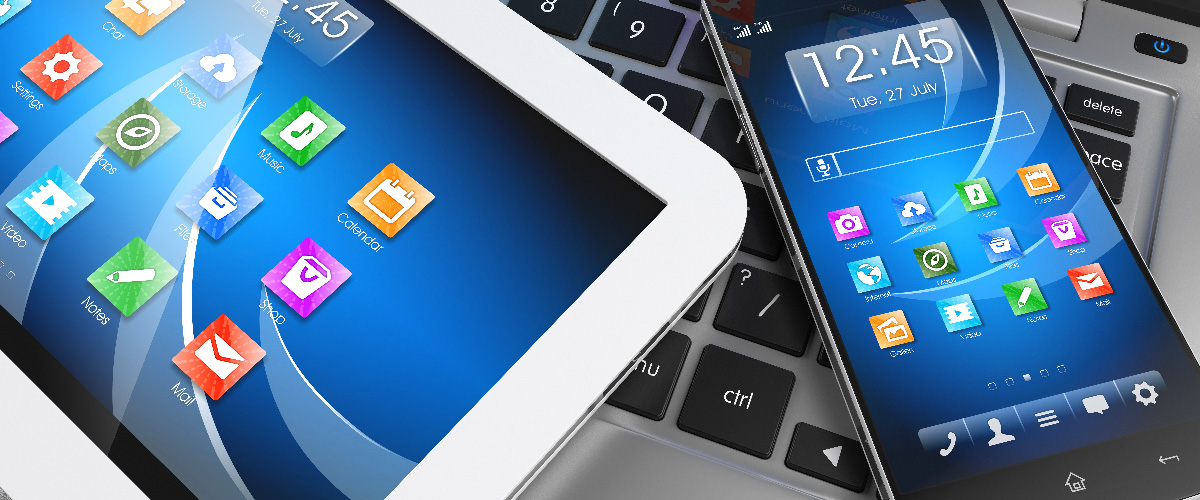 Web Content Viewer
Web Content Viewer
Why Design and Development Should Be Done with Mobile in Mind

The next time you're at a sporting event, a retail mall, or the airport, count how many cell phones are in use as evidence that design and development should be a mobile-first approach. Some of the people you'll encounter won't ever put their smartphones down, wholly engaged with making in-app purchases, checking their social network accounts, reading the news, and, of course, interacting. Additionally, the mobile device trend extends beyond consumer use to enterprise functionality, providing employees with continual access to the apps and data they need.
All told, the number of mobile devices operating worldwide is more than 15 billion and is expected to grow to 18.22 billion by 2025 – and the logic behind mobile-first design and development is apparent.
Mobile-first is a term used to describe an approach to product design and business operations that begins with optimizing and prioritizing the mobile experience, thus developing the mobile end first and adapting to larger screens from there.
For which types of software is this approach vital?
Software developed for the customer experience is typically what we think of as being-mobile first, especially as customers are increasingly using their mobile phones to make purchases and communicate with businesses — all of which are experiences that can be optimized on mobile.
However, employee-focused software or software at the back end of your business can also benefit from being mobile-first. For example, employee experience and workplace applications on mobile can help employees access their workspace from anywhere or use mobile devices for work-related tasks. In the supply chain, mobile devices are now used on the warehouse floor or for delivery drivers to track orders, watch inventory, and send invoices, all of which are vital to a modern business. An ERP solution such as S2K Enterprise can also be a way to utilize mobile-first applications for customers and employees but keep your software in a centralized location.
What are the benefits of providing users with mobile-first solutions?
With more and more consumers using their mobile devices to browse the internet, implementing a mobile-first approach can improve accessibility and interactivity while also allowing more users to interact with businesses or make purchases from anywhere. Additionally, having software that is more compatible and accessible on mobile devices can also open new channels of revenue.
The advantages of mobile are everlasting and help day-to-day operations become seamless. Mobile technology allows for higher efficiency and productivity, plus an increased ability to communicate. As the cloud continues to help boost the use and value of mobile devices, the workplace is becoming more flexible and modern for today’s businesses.
Is there a downside to mobile-first design for users?
There is no downside to the advantages of mobile-first development for digital transformation. Businesses that keep simplicity top of mind have a seamless transition to mobile devices. Employees can quickly access important information, communicate with customers, and keep business operations running smoothly.
Remember, Scale Up, Not Down
In addition to optimizing experiences for your users, mobile-first development can make life easier for your team. Designing for a PC first and then attempting to cut functionality to adapt it to a small screen is much more difficult than optimizing for mobile and then scaling up. A mobile-first approach forces you to identify essential features and set priorities, which you can translate to work on a larger screen.
Furthermore, depending on the type of software you develop, mobile may be the biggest screens you need. However, you need to keep in mind that there’s a wide range of smartphones people are carrying and mobile devices that employees use for work. Prototyping and testing are key to ensuring that your app’s user experience is optimized for each user. Automate mobile testing to confirm the best possible user experience on every device.
Gina Parry
National Account Manager
National Account Manager
Comments
By using this site you agree to our Privacy Policy and our Terms of Use.
Navigation
What We Offer
120 Comac Street
Ronkonkoma, NY 11779
Ronkonkoma, NY 11779
VAI - Vormittag Associates, Inc. ©2024 |
Privacy Policy |
Terms Of Use